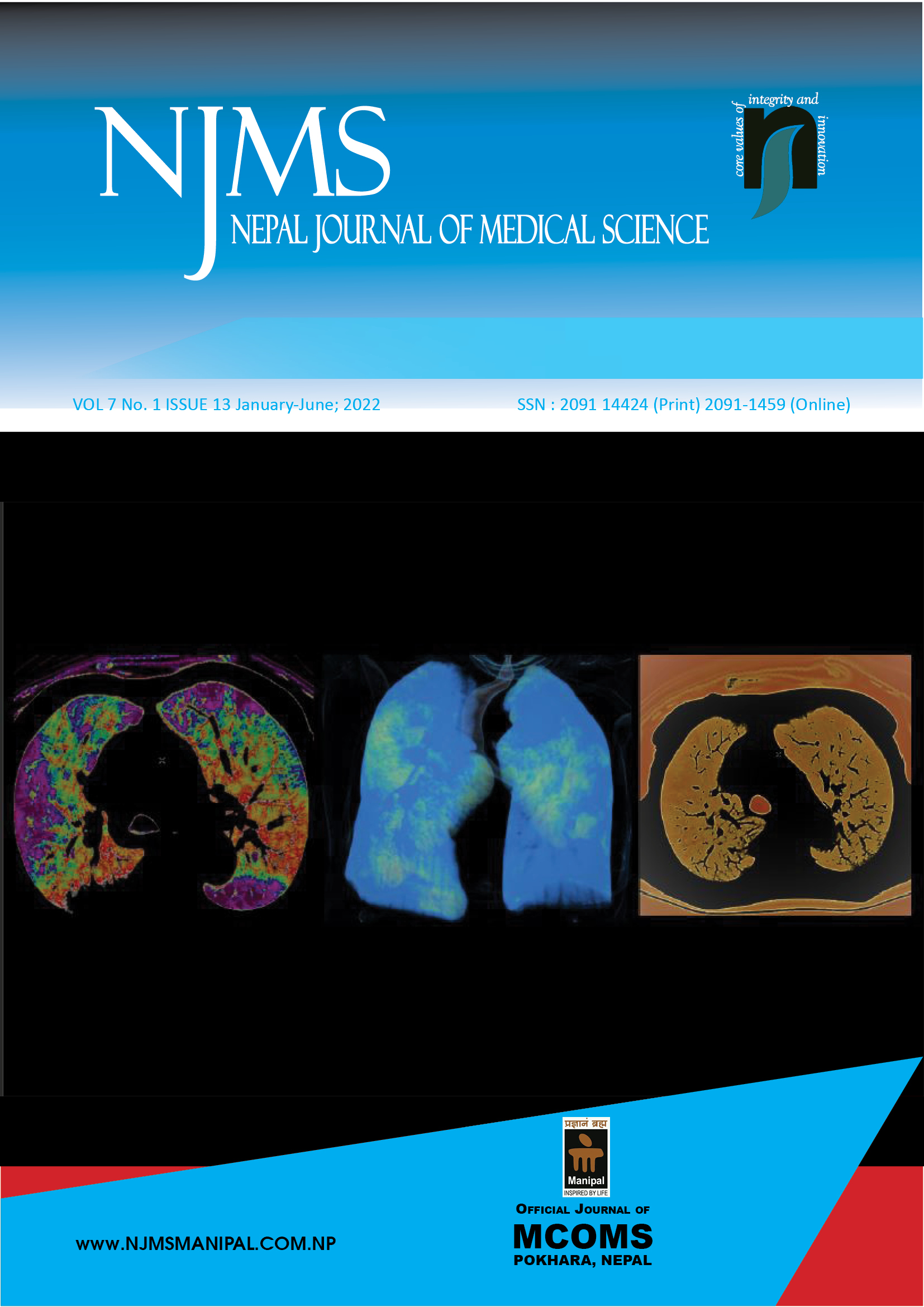Transurethral Resection of Prostate Without Traction: A Retrospective Observational Study
DOI:
https://doi.org/10.3126/njms.v7i1.43623Keywords:
Benign Prostatic Hyperplasia, Hematuria, Transurethral Resection of ProstateAbstract
Introduction: Application of traction after monopolar transurethral resection of prostate (TURP) is a common practice that causes significant discomfort to the patients. So can we avoid the morbidity of traction in a selected group of the patient where there is no significant hematuria after TURP? Hence we did a retrospective observational study to look for feasibility and safety of traction less TURP.
Methods: It is a retrospective observational study conducted in the Department of Urology, Manipal Teaching Hospital from August 2018 to August 2020 in patients who underwent traction less TURP. There was a total of 64 patients who fulfilled the inclusion criteria. All the demographic profiles, preoperative investigations, and perioperative parameters were noted. Postoperatively requirement of reapplication of traction, bladder washes, and application of tranexamic acid for hematuria, clot retention, and blood transfusion were noted. Statistical analysis was done by SPSS version 25.
Result: Mean age and prostate size were 71 yrs. and 52 g. Sixteen(25%) patients were on antiplatelet therapy, fourteen(21%) patients had a catheter in situ and 34(53%) patients were on anti-BPH (Benign Prostatic Hyperplasia) medication. There were no patients who require re- traction, bladder washes, or application of intravenous tranexamic acid. There was one (1.56%) patient who had clot retention requiring evacuation and blood transfusion. VAS score after 8 hrs. and 12hrs. was 3.22 and 1.73. Mean hemoglobin fall was 0.81 g%.
Conclusion: Traction after monopolar TURP can be safely omitted in carefully operated patients but traction should be reserved for those patients with continuous hematuria.
Downloads
Downloads
Published
How to Cite
Issue
Section
License
Copyright (c) 2022 Nepal Journal of Medical Sciences

This work is licensed under a Creative Commons Attribution 4.0 International License.
Copyright © by Nepal Journal of Medical Sciences. The ideas and opinions expressed by authors of articles summarized, quoted, or published in full text in this Journal represents only opinions of authors and do not necessarily reflect the official policy of Nepal Journal of Medical Sciences or the institute with which the author(s) is (are) affiliated, unless so specified.




